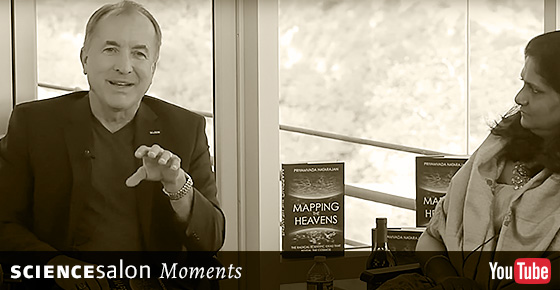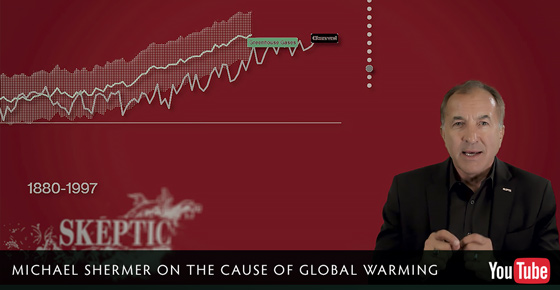Functional Medicine:
Pseudoscientific Silliness
ABOVE: A quack doctor offering a gouty John Bull some medicine whilst conventional doctors are turned away; satirizing British politics. Colored lithograph attributed to J. Doyle. See full bibliographic record from Wellcome Images. [CC BY 4.0], via Wikimedia Commons.
Language keeps changing. We used to call questionable remedies “folk medicine,” “fringe medicine,” or “quackery.” In the 1970s, the term “alternative medicine” was coined, an umbrella term for all treatments that were not supported by good enough evidence to have earned them a place in mainstream medicine. Then came “complementary and alternative medicine” (CAM), and later, “integrative medicine.” Now there’s a new kid on the block, “functional medicine” (FM) which is really just the latest flavor of integrative medicine. These are all marketing terms, Trojan horses designed to sneak non-science-based medicine into conventional medical practice. The oft-quoted quip is appropriate here: Do you know what you call alternative medicine with evidence? Medicine.
How is Functional Medicine Different from Conventional Medicine?
Functional medicine was invented by a single individual: Jeffrey Bland. He’s not a medical doctor. He’s a Ph.D. who sells dietary supplements. His supplement companies have been fined repeatedly by the FTC and FDA and have been ordered to stop making medical claims for their products. A number of health care providers have “jumped on the Bland wagon” and claim to be practicing functional medicine.
It’s hard to pin down a definition of FM; each FM provider describes it differently. Dr. Mark Hyman says conventional medicine CONTINUE READING THIS POST…
TAGS: alternative medicine, complimentary medicine, disease, health fraud, pseudomedicine, science based medicineeSkeptic for August 16, 2017
In this week’s eSkeptic:
FROM SCIENCE SALON # 9
How to Use Your Fat as Fuel
In this Moment, from Science Salon # 9, recorded on January 22, 2017, in Pasadena, California, Gary Taubes discusses how fat, muscles, hormones, and enzymes respond and interact based on our level of physical activity and dietary intake.
Stay informed and get more free science and skepticism video content by subscribing to Skeptic’s YouTube Channel.
Dropbears
MONSTERTALK EPISODE 133
Australia is home to monsters both real and legendary. In a country where a tiny octopus is toxic enough to kill 20 adults, where huge spiders can catch birds and eat them, where people are so tough that they voluntarily eat Vegemite, what kind of creature could be the apex monster? Not the bunyip. Not the yowie. Keep looking up in the trees; it’s time to face the dropbears!

Artistic depiction of a drop bear, by Yamavu (own work) [CC BY-SA 3.0], via Wikimedia Commons.
Get the MonsterTalk Podcast App and enjoy the science show about monsters on your handheld devices! Available for iOS, Android, and Windows. Subscribe to MonsterTalk for free on iTunes.
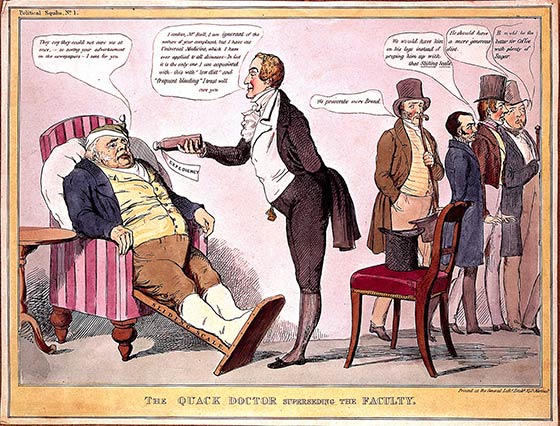
ABOVE: A quack doctor offering a gouty John Bull some medicine whilst conventional doctors are turned away; satirizing British politics. Colored lithograph attributed to J. Doyle. See full bibliographic record from Wellcome Images. [CC BY 4.0], via Wikimedia Commons.
In this week’s eSkeptic Harriet Hall, M.D. (the SkepDoc) examines the latest flavor of integrative medicine called “functional medicine” (FM) — a Trojan horse designed to sneak non-science-based medicine into conventional medical practice.
Functional Medicine:
Pseudoscientific Silliness
by Harriet Hall, M.D.
Language keeps changing. We used to call questionable remedies “folk medicine,” “fringe medicine,” or “quackery.” In the 1970s, the term “alternative medicine” was coined, an umbrella term for all treatments that were not supported by good enough evidence to have earned them a place in mainstream medicine. Then came “complementary and alternative medicine” (CAM), and later, “integrative medicine.” Now there’s a new kid on the block, “functional medicine” (FM) which is really just the latest flavor of integrative medicine. These are all marketing terms, Trojan horses designed to sneak non-science-based medicine into conventional medical practice. The oft-quoted quip is appropriate here: Do you know what you call alternative medicine with evidence? Medicine.
How is Functional Medicine Different from Conventional Medicine?
Functional medicine was invented by a single individual: Jeffrey Bland. He’s not a medical doctor. He’s a Ph.D. who sells dietary supplements. His supplement companies have been fined repeatedly by the FTC and FDA and have been ordered to stop making medical claims for their products. A number of health care providers have “jumped on the Bland wagon” and claim to be practicing functional medicine.
“Condimentary Medicine,” a term coined by Dr. Richard Rawlins, describes treatments that add spice and flavor but that have no actual effect on the outcome of the treatment. That applies in spades to Functional Medicine (FM).
It’s hard to pin down a definition of FM; each FM provider describes it differently. Dr. Mark Hyman says conventional medicine is dysfunctional, and FM is the opposite. He thinks conventional medicine is as obsolete as phrenology and bloodletting; he also rejects the germ theory of disease. He says diseases don’t exist; they are merely “the downstream symptoms of a mechanism.” The official organization, the Institute for Functional Medicine, says this:
Functional Medicine addresses the underlying causes of disease, using a systems-oriented approach and engaging both patient and practitioner in a therapeutic partnership. It is an evolution in the practice of medicine that better addresses the healthcare needs of the 21st century. By shifting the traditional disease-centered focus of medical practice to a more patient-centered approach, Functional Medicine addresses the whole person, not just an isolated set of symptoms. Functional Medicine practitioners spend time with their patients, listening to their histories and looking at the interactions among genetic, environmental, and lifestyle factors that can influence long-term health and complex, chronic disease. In this way, Functional Medicine supports the unique expression of health and vitality for each individual. […]
eSkeptic for August 9, 2017
In this week’s eSkeptic:
CORRECTION
Article Incorrectly Referenced
In Skeptic magazine issue 22.2, we published an article titled “Area 51: What’s Really Going on There?” by Donald Prothero. It was credited as an excerpt from the forthcoming co-authored volume by Prothero and Tim Callahan, titled UFOs, Chemtrails, and Aliens: What Science Says (Indiana University Press, August 2017), which it is. But it was originally published in a book consisting of a collection of articles edited by Karen Stollznow titled Would You Believe It?: Mysterious Tales from People You’d Least Expect (January, 2017) under the same title. This work should have been properly referenced in the Skeptic issue. Our apologies to Karen Stollznow and to our readers for this oversight.
—Michael Shermer, Publisher

ABOVE: The author in the 1984 Race Across America (RAAM), crossing from Arizona into Utah through the Virgin River Gorge.
In this week’s eSkeptic, Michael Shermer reviews Knowing the Score: What sports can teach us about philosophy (and what philosophy can teach us about sports), by King’s College philosopher David Papineau.
Life’s Score
by Michael Shermer
Among cycling aficionados of my generation, Peter Yates’ and Steve Tesich’s 1979 film Breaking Away was a welcome vehicle to convey the elegance and complex strategy of our sport to an American audience largely oblivious to its beauty and nuances. Of course, like most sports films, it was a metaphor for something deeper, in this case a coming of age story of a young man struggling to break away from the provincialism of family and friends, along with a morality tale about how everyone lies a little and some people cheat a lot.
In Knowing the Score, King’s College philosopher David Papineau uses specific sports as metaphors for and lessons about many of the most important and contentious issues in philosophy and life. In his chapters on cycling, for example, he confesses his ignorance while watching the 2012 Olympic road race as to why four women cyclists from different countries would work together after their break away from the peloton. Papineau finds an answer in game theory, the analysis of competition and cooperation between rational actors in a conflict situation. The prisoner’s dilemma model is the most famous example: you and another prisoner are arrested for a crime with the following options: (1) If both of you remain silent then you each receive one year in jail; (2) If you confess but the other person does not, then you go free and he gets three years; (3) If the other prisoner confesses and you don’t, then you receive the three-year penalty while he goes free; (4) If you both confess then you each get two years. What should you do? Research shows that when the game is played just once, or over a fixed number of rounds without the players being allowed to communicate, defection (confessing) is the common strategy. But when the game is played over an unknown number of rounds the most common strategy is “tit-for-tat,” where you begin by cooperating and then do whatever the other player does. Even more cooperation can be induced in a “Many Person Dilemma” in which one player interacts with several other players, and in which players are allowed to accumulate experience with the other players in order to establish trust. Here cooperation trumps competition, selflessness overcomes selfishness. […]
FROM SCIENCE SALON # 13
Walter Scheidel Q&A Session
Enjoy the post-Salon Q&A session with the audience and Walter Scheidel.
The Great Leveler is the first book to chart the crucial role of violent shocks in reducing inequality over the full sweep of human history around the world. An essential contribution to the debate about inequality, The Great Leveler provides important new insights about why inequality is so persistent—and why it is unlikely to decline anytime soon.
This clip is from Science Salon # 13, recorded on June 11, 2017, in Pasadena, California.
Stay informed and get more free science and skepticism video content by subscribing to Skeptic’s YouTube Channel.
eSkeptic for August 2, 2017
In this week’s eSkeptic:
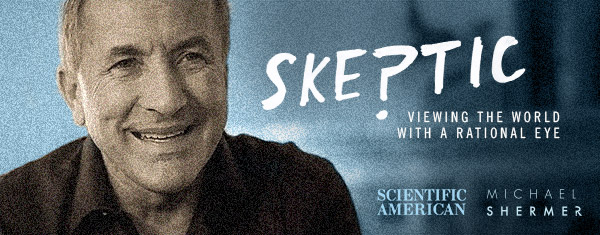
SCIENTIFIC AMERICAN “SKEPTIC” COLUMN FOR AUGUST 2017
Are We All Racists? Private Thoughts and Public Acts
Novelists often offer deep insights into the human psyche that take psychologists years to test. In his 1864 Notes from Underground, for example, Russian novelist Fyodor Dostoyevsky observed: “Every man has reminiscences which he would not tell to everyone, but only to his friends. He has other matters in his mind which he would not reveal even to his friends, but only to himself, and that in secret. But there are other things which a man is afraid to tell even to himself, and every decent man has a number of such things stored away in his mind.”
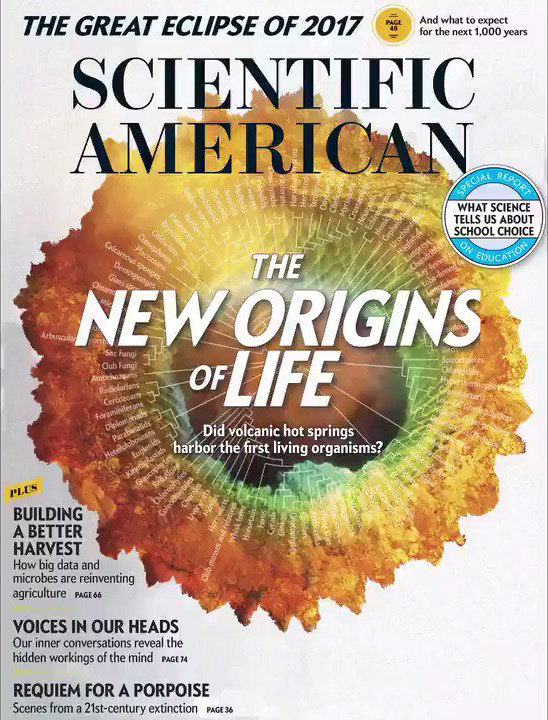
Intuitively, the observation rings true, but is it true experimentally? Twenty years ago social psychologists Anthony Greenwald, Mahzarin Banaji and Brian Nosek developed an instrument called the Implicit Association Test (IAT) that, they claimed, can read the innermost thoughts that you are afraid to tell even yourself. And those thoughts appear to be dark and prejudiced: we favor white over black, young over old, thin over fat, straight over gay, able over disabled, and more.
I took the test myself, as can you (Google “Project Implicit”). The race task first asks you to separate black and white faces into one of two categories: White people and Black people. Simple. Next you are asked to sort a list of words (joy, terrible, love, agony, peace, horrible, wonderful, nasty, and so on) into either Good or Bad buckets. Easy. Then the words and the black and white faces appear on the screen one at a time for you to sort into either Black people/Good or White people/Bad. The word “joy,” for example, would go into the first category, whereas a white face would go into the second category. This sorting becomes noticeably slower. Finally, you are tasked with sorting the words and faces into the categories White people/Good or Black people/Bad. Distressingly, I was much quicker to associate words like joy, love and pleasure with White people/Good than I was with Black people/Good. […]
FROM SCIENCE SALON # 9
Why Have We Embraced Naïve Theories of Obesity?
Advances in science over the past 50+ years have given us more accurate tools with which to tackle the epidemic of obesity, dramatically changing our understanding of its causes.
This Moment is from Science Salon # 9, recorded on January 22, 2017, in Pasadena, California, Gary Taubes discusses the dangers of the metabolism of fructose in the liver.
Stay informed and get more free science and skepticism video content by subscribing to Skeptic’s YouTube Channel.
![Low-temperature scanning electron micrograph of soybean cyst nematode and its egg. Magnified 1,000 times (by Agricultural Research Service [Public domain], via Wikimedia Commons) Thankfully, this little parasite doesn't infect humans.](https://www.skeptic.com/eskeptic/2017/images/17-08-02/Soybean_cyst_nematode_and_egg_SEM.jpg)
ABOUT THE IMAGE ABOVE: Low-temperature scanning electron micrograph of soybean cyst nematode and its egg, magnified 1,000 times (by Agricultural Research Service [Public domain], via Wikimedia Commons). Nematode worms (C. elegans) survived the Space Shuttle Columbia re-entry breakup. It is believed to be the first known life-form to survive a virtually unprotected atmospheric descent to Earth’s surface. Thankfully, this little parasite doesn’t infect humans. But, it’s still kinda creepy.
In this week’s eSkeptic, Tim Callahan explores the question of whether microbes from any given planet will be brutally harmful to the inhabitants of another planet who have no immunity to the alien pathogens.
ET v. Earth Pathogens:
The Andromeda Strain or War of the Worlds—Will ETs Kill Us or Vice Versa?
by Tim Callahan
In H. G. Wells’ 1898 novel The War of the Worlds the seemingly invincible invading Martians are wiped out by Earth’s microbes, against which they have no immunity. In Michael Crichton’s 1969 novel The Andromeda Strain the opposite happens: the people of a small town in Arizona are annihilated by a microorganism accidentally brought to Earth in a crashed satellite. Both novels share the thesis in common that microbes from any given planet will be brutally inimical to the denizens of another planet, who have no immunity to these alien pathogens. In Gordon R. Dickson’s 1987 novel Way of the Pilgrim, the Aalaag alien conquerors of our planet are immune to Earth’s microbes because their biochemistry is so different from that of the native pathogens. Who is right, H. G. Wells, Michael Crichton, or Gordon R. Dickson?
To some degree, each of these authors probably had a piece of the truth in their fictional works. Assuming ETs coming to Earth are carbon-based life forms that evolved in a watery medium, it seems likely that natural prebiotic chemical reactions would produce the same basic biochemical building blocks on their home planet that gave rise to life here on Earth. This assumption is based on well known research such as the 1952 Stanley Miller and Harold Urey experiment, which produced as many as 20 different amino acids from electrical discharges into a reducing atmosphere of methane, ammonia and water vapor; the 1961 experiment by Joan Oro, which produced adenine, among other compounds, from hydrogen cyanide, and amino acids from hydrogen cyanide and ammonia;1 and the 2008 volcanic discharge experiment.2 Beginning with the same building blocks, such as amino acids and cyclic compounds such as adenine, carbon-based life developing in water on other planets, would, given the natural chemical processes observed in these experiments, likely have generated a basic biochemistry similar to ours. That is, bodies made up of, among other things, proteins and nucleic acids. Hence, they would likely be potential food sources for Earth’s microbial pathogens.
However, there are certain factors we need to consider before making the sweeping generalization that either visiting or invading extraterrestrials would be sitting duck hosts for our microbes. Three of these are: possible differences in biochemistry between terrestrial and extraterrestrial life forms with respect to the “handedness” of their molecules, the possibly arbitrary nature of our genetic code, and the transmission of certain diseases by insect and arachnid vectors. […]
ET v. Earth Pathogens:
Will ETs Kill Us or Vice Versa?
In H. G. Wells’ 1898 novel The War of the Worlds the seemingly invincible invading Martians are wiped out by Earth’s microbes, against which they have no immunity. In Michael Crichton’s 1969 novel The Andromeda Strain the opposite happens: the people of a small town in Arizona are annihilated by a microorganism accidentally brought to Earth in a crashed satellite. Both novels share the thesis in common that microbes from any given planet will be brutally inimical to the denizens of another planet, who have no immunity to these alien pathogens. In Gordon R. Dickson’s 1987 novel Way of the Pilgrim, the Aalaag alien conquerors of our planet are immune to Earth’s microbes because their biochemistry is so different from that of the native pathogens. Who is right, H. G. Wells, Michael Crichton, or Gordon R. Dickson?
To some degree, each of these authors probably had a piece of the truth in their fictional works. Assuming ETs coming to Earth are carbon-based life forms that evolved in a watery medium, it seems likely that natural prebiotic chemical reactions would produce the same basic biochemical building blocks on their home planet that gave rise to life here on Earth. This assumption is based on well known research such as the 1952 Stanley Miller and Harold Urey experiment, which produced as many as 20 different amino acids from electrical discharges into a reducing atmosphere of methane, ammonia and water vapor; the 1961 experiment by Joan Oro, which produced adenine, among other compounds, from hydrogen cyanide, and amino acids from hydrogen cyanide and ammonia;1 and the 2008 volcanic discharge experiment.2 Beginning with the same building blocks, such as amino acids and cyclic compounds such as adenine, carbon-based life developing in water on other planets, would, given the natural chemical processes observed in these experiments, likely have generated a basic biochemistry similar to ours. That is, bodies made up of, among other things, proteins and nucleic acids. Hence, they would likely be potential food sources for Earth’s microbial pathogens.
However, there are certain factors we need to consider before making the sweeping generalization that either visiting or invading extraterrestrials would be sitting duck hosts for our microbes. Three of these are: possible differences in biochemistry between terrestrial and extraterrestrial life forms with respect to the “handedness” of their molecules, the possibly arbitrary nature of our genetic code, and the transmission of certain diseases by insect and arachnid vectors.
Right or Left Handed ETs?
Just as our right and left hands are mirror images of one another, and just as we can’t fit our right hands into gloves made for the left hand, so also are certain organic molecules mirror images of each other. Among these are amino acids, the building blocks of proteins. Proteins are polymers—giant molecules made up of repeating subunits (much smaller molecules called monomers). Polymers can be compared to a brick wall, a large structure made up of the repeating subunits of many individual bricks. There are 20 different types of amino acids (monomers) that are chemically bound together to form CONTINUE READING THIS POST…
TAGS: alien life, diseaseeSkeptic for July 26, 2017
In this week’s eSkeptic:
In this week’s eSkeptic, George Michael reviews Milo Yiannopoulos’s self-published book Dangerous, which has reached #1 on Amazon’s Bestseller list, and, at the time of this writing, is near the top of both the New York Times and the Wall Street Journal bestseller lists.
Provocateur
by George Michael
In February of 2017 many people had written Milo Yiannopoulos off after it transpired that he had given an interview on a 2015 Joe Rogan podcast, which was construed by some listeners as a defense of pederasty. On the show, he seemingly spoke fondly of his experience as 13-year old minor when he had had sex with a priest. Once the interview gained notoriety, CPAC (Conservative Political Action Conference) quickly rescinded its invitation to Yiannopoulos to serve as the organization’s keynote speaker at its 2017 annual convention. To make matters worse, soon thereafter, Simon & Shuster cancelled the publication of his book for which it had given a $250,000 advance just a month before. And what seemed to have been a maneuver to spare a revolt at Breitbart News, Milo gracefully resigned from his position as tech editor with his employer. In his own words, Milo almost gave up on his mission, but decided not to back down after the support he received from his many fans. Instead, all his critics managed to accomplish was to “piss me off.” Marshaling together a number of investors, he managed to self-publish his book—Dangerous—which rocketed to number one on Amazon’s bestsellers list even before its release, and at the time of this writing it is near the top of both the New York Times and the Wall Street Journal bestseller lists.
Inasmuch as Milo Yiannopoulos is a genuine gay celebrity, his memoir has been highly anticipated. To be sure, a number of celebrities who just happened to be gay preceded him. For example, in 1976, Elton John divulged in an interview that he was bi-sexual and his career suffered for a while as a consequence. In 1981, Billie Jean King became the first major female athlete to come out of the closet. Perhaps more than any other figure, Ellen DeGeneres has normalized gays in America. With a wholesome demeanor, she came off as the girl next door despite being a lesbian, and even received the Presidential Medal of Freedom from Barack Obama in 2016. But for her and other public figures, their gayness was incidental to their celebrity. By contrast, Milo’s celebrity homosexuality is an integral part of his shtick. For example, he regales college audiences with his aspirations to one day be surrounded “by Nigerian bodyguards” and he recounts how he spent time during his youth in London losing his virginity in interracial five-somes with drag queens. Ironically, his main constituency—college-aged, straight white men—find these disclosures hilarious and entertaining.
As a First Amendment fundamentalist, Milo sees as his mission to push the boundaries of acceptable discourse.
As a First Amendment fundamentalist, Milo sees as his mission to push the boundaries of acceptable discourse. His outrageousness notwithstanding, Milo advances a compelling critique of the progressive movement, which has become dangerously ossified over the past few decades, losing sight of its commitment to economic security to a preoccupation with extremely divisive identity politics. As such, Milo deserves a fair hearing for no other reason that his growing popularity is indicative of a rising tide of populism that in large measure propelled Donald J. Trump into the White House. […]
FROM SCIENCE SALON # 8
Why Not Call “Dark Matter” Angels?
In this Moment from Science Salon # 8, recorded on November 13, 2016, in Pasadena, California, Michael Shermer discusses how our use of language to name things changes as our empirical knowledge changes.
Stay informed and get more free science and skepticism video content by subscribing to Skeptic’s YouTube Channel.
The Life and Extraordinary Afterlife of H. P. Lovecraft
MONSTERTALK EPISODE 132
Author Scott Poole (previously with us for Vampira and Monsters in America) joins us to talk about his new biography on American horror writer H. P. Lovecraft, In The Mountains of Madness: The Life and Extraordinary Afterlife of H.P. Lovecraft. What is it about the writing of this peculiar and complicated writer from New England that has cast such an oversized shadow over American literature?
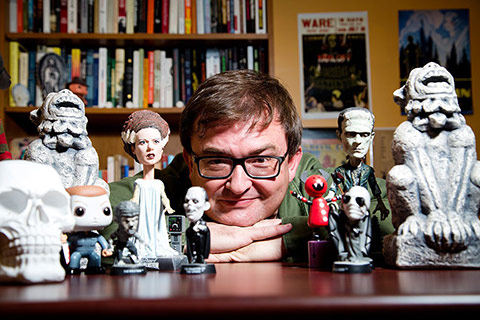
Scott Poole (photo by Jonathan Boncek)
Get the MonsterTalk Podcast App and enjoy the science show about monsters on your handheld devices! Available for iOS, Android, and Windows. Subscribe to MonsterTalk for free on iTunes.
Provocateur:
A Review of Milo Yiannopoulos’s new book Dangerous
In February of 2017 many people had written Milo Yiannopoulos off after it transpired that he had given an interview on a 2015 Joe Rogan podcast, which was construed by some listeners as a defense of pederasty. On the show, he seemingly spoke fondly of his experience as 13-year old minor when he had had sex with a priest. Once the interview gained notoriety, CPAC (Conservative Political Action Conference) quickly rescinded its invitation to Yiannopoulos to serve as the organization’s keynote speaker at its 2017 annual convention. To make matters worse, soon thereafter, Simon & Shuster cancelled the publication of his book for which it had given a $250,000 advance just a month before. And what seemed to have been a maneuver to spare a revolt at Breitbart News, Milo gracefully resigned from his position as tech editor with his employer. In his own words, Milo almost gave up on his mission, but decided not to back down after the support he received from his many fans. Instead, all his critics managed to accomplish was to “piss me off.” Marshaling together a number of investors, he managed to self-publish his book—Dangerous—which rocketed to number one on Amazon’s bestsellers list even before its release, and at the time of this writing it is near the top of both the New York Times and the Wall Street Journal bestseller lists.
Inasmuch as Milo Yiannopoulos is a genuine gay celebrity, his memoir has been highly anticipated. To be sure, a number of celebrities who just happened to be gay preceded him. For example, in 1976, Elton John divulged in an interview that he was bi-sexual and his career suffered for a while as a consequence. In 1981, Billie Jean King became the first major female athlete to come out of the closet. Perhaps more than any other figure, Ellen DeGeneres has normalized gays in America. With a wholesome demeanor, she came off as the girl next door despite being a lesbian, and even received the Presidential Medal of Freedom from Barack Obama in 2016. But for her and other public figures, their gayness was incidental to their celebrity. By contrast, Milo’s celebrity homosexuality is an integral part of his shtick. For example, he regales college audiences with his aspirations to one day be surrounded “by Nigerian bodyguards” and he recounts how he spent time during his youth in London losing his virginity in interracial five-somes with drag queens. Ironically, his main constituency—college-aged, straight white men—find these disclosures hilarious and entertaining.
As a First Amendment fundamentalist, Milo sees as his mission to push the boundaries of acceptable discourse. His outrageousness notwithstanding, Milo advances a compelling critique of the progressive movement, which has become dangerously ossified over the past few decades, losing sight of its commitment to economic security to a preoccupation with extremely divisive identity politics. As such, Milo deserves a fair hearing for no other reason that his growing popularity is indicative of a rising tide of populism that in large measure propelled Donald J. Trump into the White House.

His book critically analyzes a number of segments of both the progressive and conservative movements. As he points out, the political left in America that was once the champion of blue-collar workers, became CONTINUE READING THIS POST…
TAGS: alt-right, Breitbart, Donald Trump, politics, review, YiannopouloseSkeptic for July 19, 2017
In this week’s eSkeptic:
![Anneken Hendriks, a woman accused of following the wrong faith, about to be burned to death in 1571. Depiction by the Dutch artist Johannes Jan Luyken. [PUBLIC DOMAIN] via wikimedia commons](https://www.skeptic.com/eskeptic/2017/images/17-07-19/Feuerhinrichtung-von-Anneken-Hendriks-Amsterdam-1571.jpg)
ABOUT THE IMAGE ABOVE: Illustration by the Dutch article Johannes van Luyken of Anneken Hendriks for the crime of following the wrong faith—the anabaptist faith—which along with witchcraft and many other misdeeds was punishable by death. This captures the full measure of Voltaire’s famous observation: “Those who can make you believe absurdities can make you commit atrocities.” [PUBLIC DOMAIN] via wikimedia commons
Abstract
The success of the Scientific Revolution led to the development of the worldview of scientific naturalism, or the belief that the world is governed by natural laws and forces that can be understood, and that all phenomena are part of nature and can be explained by natural causes, including human cognitive, moral, and social phenomena. The application of scientific naturalism in the human realm led to the widespread adoption of Enlightenment humanism, a cosmopolitan worldview that places supreme value on science and reason, eschews the supernatural entirely, and relies exclusively on nature and nature’s laws—including human nature and the laws and forces that governance us and our societies—for a complete understanding of the cosmos and everything in it, from particles to people.
The following article was originally published in the journal Theology and Science, 19 June, 2017, by Michael Shermer.
A recording of this article can be listened to below, read by the author, with an introduction by David Smalley, thanks to our Patrons at Patreon.
Scientific Naturalism
A Manifesto for Enlightenment Humanism
by Michael Shermer
In June of 1510, 64 women and men were burned at the stake in Val Camonica, Italy, for causing drought and fires and for harming people, animals, and land.
In July of 1518, 60 women and men were burned at the stake in Breto, Italy, for triggering thunder and lightning and for causing sickness and death of nearly 200 people.
In June of 1582, the wife of an English sawyer named Alice Glosscock from the town of Chelmsford was stripped naked and her body searched for “the marks of a witch,” which were found, leading to her conviction and execution.
In May of 1653, a Connecticut colonialist named Elizabeth Godman asked her neighbor Goodwife Thorp if she had any chickens to sell, but none were available. The next day Thorp’s chickens dropped dead, leading to Godman’s arrest and trial.
In May of 1692, seven teenage girls writhed on the floor of a Salem, Massachusetts courtroom during the trial of a suspected witch named Martha Carrier, crying out “There is a black man whispering in her ear!” Carrier was one of 20 people executed in what became the most famous witch trial in history.
What were these people thinking?
Download for free the PDF of the entire article:

Dr. Michael Shermer is the Publisher of Skeptic magazine, a monthly columnist for Scientific American, and a Presidential Fellow at Chapman University. He is the author of The Moral Arc, The Believing Brain, Why People Believe Weird Things, Why Darwin Matters, and The Science of Good and Evil. His next book is Heavens on Earth: The Scientific Search for the Afterlife, Immortality, and Utopia. His two TED talks, viewed nearly 8 million times, were voted in the top 100 of the more than 2000 TED talks.
FROM SCIENCE SALON # 9
Gary Taubes on the Causes of the Obesity Epidemic in America
Among Americans, diabetes is more prevalent today than ever. Obesity is at epidemic proportions; nearly 10% of children are thought to have nonalcoholic fatty liver disease. And sugar is at the root of these, and other, critical society-wide, health-related problems.
In this Moment from Science Salon # 9, recorded on January 22, 2017, in Pasadena, California, Gary Taubes discusses the dangers of the metabolism of fructose in the liver.
Stay informed and get more free science and skepticism video content by subscribing to Skeptic’s YouTube Channel.
eSkeptic for July 12, 2017
In this week’s eSkeptic:
FROM SCIENCE SALON # 5
Does the Universe Just Go On Forever?
This Moment is from Science Salon # 5, with Dr. janna Levin: Gravitational Waves, Black Holes and the Nature of the Cosmos, which you can watch for free online.
Based on her new book, Black Hole Blues and Other Songs from Outer Space, astrophysicist and award-winning writer Dr. Janna Levin tells the epic story of the scientific campaign to record gravitational waves—the holy grail of modern cosmology.
Stay informed and get more free science and skepticism video content by subscribing to Skeptic’s YouTube Channel.

SCIENTIFIC AMERICAN “SKEPTIC” COLUMN FOR JULY 2017
Who Are You? Memories, Points of View and the Self
The Discovery is a 2017 Netflix film in which Robert Redford plays a scientist who proves that the afterlife is real. “Once the body dies, some part of our consciousness leaves us and travels to a new plane,” the scientist explains, evidenced by his machine that measures, as another character puts it, “brain wavelengths on a subatomic level leaving the body after death.”

This idea is not too far afield from a real theory called quantum consciousness, proffered by a wide range of people, from physicist Roger Penrose to physician Deepak Chopra. Some versions hold that our mind is not strictly the product of our brain and that consciousness exists separately from material substance, so the death of your physical body is not the end of your conscious existence. Because this is the topic of my next book, Heavens on Earth: The Scientific Search for the Afterlife, Immortality, and Utopia (Henry Holt, 2018), the film triggered a number of problems I have identified with all such concepts, both scientific and religious.
First, there is the assumption that our identity is located in our memories, which are presumed to be permanently recorded in the brain: if they could be copied and pasted into a computer or duplicated and implanted into a resurrected body or soul, we would be restored. But that is not how memory works. Memory is not like a DVR that can play back the past on a screen in your mind. Memory is a continually edited and fluid process that utterly depends on the neurons in your brain being functional. It is true that when you go to sleep and wake up the next morning or go under anesthesia for surgery and come back hours later, your memories return, as they do even after socalled profound hypothermia and circulatory arrest. Under this procedure, a patient’s brain is cooled to as low as 50 degrees Fahrenheit, which causes electrical activity in neurons to stop—suggesting that long-term memories are stored statically. But that cannot happen if your brain dies. That is why CPR has to be done so soon after a heart attack or drowning because if the brain is starved of oxygen-rich blood, the neurons die, along with the memories stored therein. […]
Naming Monsters
MONSTERTALK EPISODE 131
What’s in a name? More than you might imagine, if you’re a scientist trying to officially name a new species. In this episode of MonsterTalk, we talk to Ichthyologist Ben Frable about the process (and many challenges) of scientifically identifying and naming new species.

Ben Frable (photos ©2011 Josh Schaedel Photography)
Get the MonsterTalk Podcast App and enjoy the science show about monsters on your handheld devices! Available for iOS, Android, and Windows. Subscribe to MonsterTalk for free on iTunes.
I am Not Living in a Computer Simulation, and Neither Are You
The notion that we’re all just computer simulations living in a simulated universe—once the stuff of late-night college dormitory bull sessions—has now resurfaced, having been espoused by (among other eminences) a world-famous astrophysicist and an Internet entrepreneur billionaire.
The notion is the latest manifestation of what was perhaps first contemplated (and then, at least to his own satisfaction, disproved) by Descartes, whose cogito, ergo sum—I think, therefore I am—was the first step in an attempt to figure out what can be reliably known, although he considered not a computer program creating the illusion of his body and his world, but an evil demon. The idea is a close cousin of the philosophers’ thought experiment (or parlor trick) known as “brain-in-a-vat,” which is said to have inspired the Matrix movies. Notice, though, that brain-in-a-vat requires a real brain in a real vat and the Matrix movies had real brains in real people plugged into their simulated world. The proposition that we’re all just computer simulations in a simulated universe eliminates the vat, the brain, the people, and the world. It can also be seen as the nerd’s version of the notion that we’re all simply dreams in the mind of God—perhaps the central creed of a Church of Computer Science.
The computer simulation argument proceeds along these lines:
- The universe contains a vast number of stars.
- Some of these stars have planets.
- Some of these planets must be like Earth.
- Since intelligent life arose and eventually invented computers on Earth, intelligent life must have arisen and invented computers on some of these planets.
- It is (or inevitably will be) possible to simulate intelligent life inhabiting a simulated reality on a computer.
- Since it’s possible, it must have been done.
- There must be a vast number of such simulations on a vast number of computers on a vast number of planets.
- Since there’s only one real universe but there’s a vast number of simulations, the probability that you’re living in a simulation approaches one, while the probability that you’re living in the real universe approaches zero.
Having no empirical evidence or testable implications, this argument is not science or even scientific speculation. In the language of pragmatism and logical positivism, if the notion can’t possibly make any testable difference from the belief that we’re CONTINUE READING THIS POST…
TAGS: computer simulation, consciousnesseSkeptic for July 5, 2017
In this week’s eSkeptic:
FROM SCIENCE SALON # 9
Gary Taubes Warns About Sugar in Your Diet
Among Americans, diabetes is more prevalent today than ever. Obesity is at epidemic proportions; nearly 10% of children are thought to have nonalcoholic fatty liver disease. And sugar is at the root of these, and other, critical society-wide, health-related problems.
In this Moment from Science Salon # 9, recorded on January 22, 2017, in Pasadena, California, Gary Taubes discusses the dangers of the metabolism of fructose in the liver.
Stay informed and get more free science and skepticism video content by subscribing to Skeptic’s YouTube Channel.

In this week’s eSkeptic, Peter Kassan examines the idea that we are all just computer simulations living in a computer simulation.
I am Not Living in a Computer Simulation, and Neither Are You
by Peter Kassan
The notion that we’re all just computer simulations living in a simulated universe—once the stuff of late-night college dormitory bull sessions—has now resurfaced, having been espoused by (among other eminences) a world-famous astrophysicist and an Internet entrepreneur billionaire.
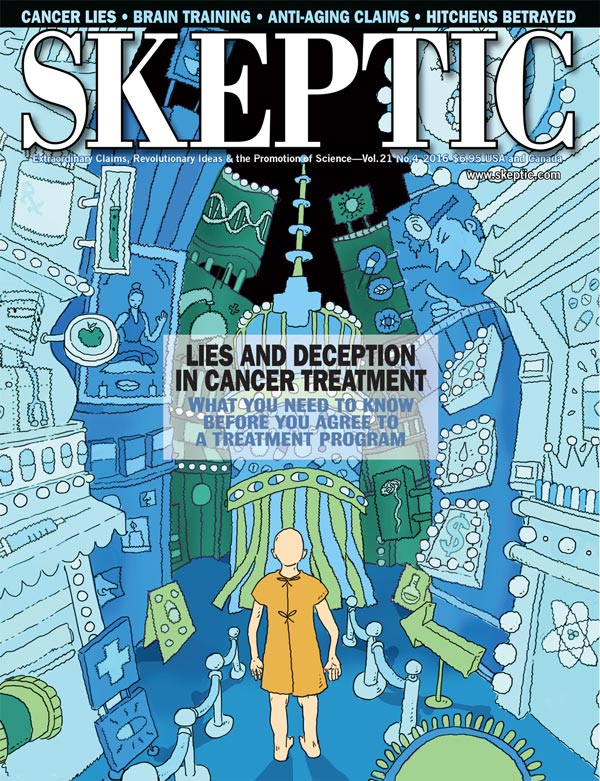
This article appeared in Skeptic magazine 21.4 (2016).
Buy this issue
The notion is the latest manifestation of what was perhaps first contemplated (and then, at least to his own satisfaction, disproved) by Descartes, whose cogito, ergo sum—I think, therefore I am—was the first step in an attempt to figure out what can be reliably known, although he considered not a computer program creating the illusion of his body and his world, but an evil demon. The idea is a close cousin of the philosophers’ thought experiment (or parlor trick) known as “brain-in-a-vat,” which is said to have inspired the Matrix movies. Notice, though, that brain-in-a-vat requires a real brain in a real vat and the Matrix movies had real brains in real people plugged into their simulated world. The proposition that we’re all just computer simulations in a simulated universe eliminates the vat, the brain, the people, and the world. It can also be seen as the nerd’s version of the notion that we’re all simply dreams in the mind of God—perhaps the central creed of a Church of Computer Science.
The computer simulation argument proceeds along these lines:
- The universe contains a vast number of stars.
- Some of these stars have planets.
- Some of these planets must be like Earth.
- Since intelligent life arose and eventually invented computers on Earth, intelligent life must have arisen and invented computers on some of these planets.
- It is (or inevitably will be) possible to simulate intelligent life inhabiting a simulated reality on a computer.
- Since it’s possible, it must have been done.
- There must be a vast number of such simulations on a vast number of computers on a vast number of planets.
- Since there’s only one real universe but there’s a vast number of simulations, the probability that you’re living in a simulation approaches one, while the probability that you’re living in the real universe approaches zero.

Fighting Post-Truth
SKEPTICALITY EPISODE 286
Fighting post-truth politics, promoting rational thinking and wise decision-making in the political sphere seems like it has become harder in the past couple years or so. Gleb Tsipursky is the founder of Intentional Insights, which unites reason-oriented people to popularize science-based strategies for wise decision-making and rational thinking in politics and other areas. Gleb is a tenure-track professor at Ohio State in the Decision Sciences Collaborative and History Department. In this episode of Skepticality, Derek got to steal some of Gleb’s time to chat more about his work and his “Pro-Truth Pledge,” whose purpose is to change the incentive structure for public figures.

Gleb Tsipursky
Get the Skepticality App — the Official Podcast App of Skeptic Magazine — so you can enjoy your science fix and engaging interviews on the go! Available for iOS, Android, and Windows.
An Outbreak of Mass Hallucinations and Shoddy Journalism:
Why We Need Skepticism More Than Ever
When a mysterious epidemic of hallucinations was reported to have broken out in Oregon in October of 2016, media outlets around the world portrayed the story as a baffling medical mystery. There’s only one problem: it never happened. The case of the hallucinating Oregonians serves as a stark reminder of the threat posed by an uncritical media, and the need for skepticism and critical thinking.
“Things are seldom what they seem, skim milk masquerades as cream.”
During the early morning hours of Wednesday October 12th, 2016, an extraordinary story began unfolding in the community of North Bend, a small picturesque suburb of Coos Bay nestled along the Pacific Ocean in southwest Oregon. At about 3 am, police responded to a 9-1-1 call of vandalism. The complainant was a 57-year-old woman who was a live-in caregiver for an elderly resident. The caller claimed that several people were trying to remove the roof of her car. When police arrived, they could find no evidence of any crime and soon left. Two and a half hours later, the same woman again called to report that the vandals were back and trying to remove her car roof. Once again police rushed to the scene but could find nothing out of the ordinary. In fact, the responding deputies, Doug Miller and David Blalack, could find no evidence that any crime had been committed. Given the unusual nature of her claims, police grew suspicious that the woman may have hallucinated the episodes. She was taken to the nearby Coos Bay Area Hospital where she was examined by medical personnel, “appeared fine, and returned home.”1
Numerous media outlets reported that over the next several hours, the two responding police officers, a 78-year-old woman whom the complainant was caring for, and a hospital worker, all began to hallucinate. Those affected were reportedly hospitalized and the emergency room was quarantined. At first, investigators suspected the culprit was a transdermal Fentanyl patch that the elderly patient had been using to control pain. Fentanyl is a powerful synthetic opiate. It was suggested that all of those affected may have inadvertently touched the patch. Hence, one newspaper headline proclaimed: “Doctors Left Stumped as Bizarre Hallucination-causing Illness Seemingly Spread by Touch.”2 A HAZMAT team searched the house. They reported that CONTINUE READING THIS POST…
TAGS: ethical journalism, hallucinations, mass hysteria, urban legendseSkeptic for June 28, 2017
In this week’s eSkeptic:
GLOBAL WARMING
It’s Real and Human Caused…Still!
Michael Shermer debunks skeptics of anthropogenic global warming using graphs of things both natural and industrial (from NASA’s Goddard Institute for Space Studies) to see what effect they have had on global temperatures over time. What is really warming the world? Earth’s orbit changes, the sun, volcanoes, deforestation, ozone pollution, aerosol pollution? NO. It really is greenhouse gases!
FROM SCIENCE SALON # 11
Michael Shermer on Alternative Facts
What do you call alternative facts with evidence? You call them facts! Michael Shermer reminds us that the fight against science denialism (i.e. climate change denial, Holocaust denial, denial of evolution, vaccine efficacy denial) and alternative facts is ongoing and that we must always be vigilant and continue the march for science. He reminds us that our religious and political worldviews bias us against evidence that counters our deeply held beliefs.
This Moment is from Science Salon # 11, with Andrew Shtulman: Scienceblind: Why Our Intuitive Theories About the World Are So Often Wrong, which you can watch for free online.
Stay informed and get more free science and skepticism video content by subscribing to Skeptic’s YouTube Channel.

“Doctors Left Stumped as Bizarre Hallucination-causing Illness Seemingly Spread by Touch.”
In this week’s eSkeptic, medical sociologist Dr. Robert E. Bartholomew, examines a “baffling epidemic of hallucinations” that was reported to have broken out in Oregon in October of 2016. Was it an outbreak of mass suggestion, or simply an surge of shoddy journalism?
An Outbreak of Mass Hallucinations and Shoddy Journalism: Why We Need Skepticism More Than Ever
by Robert E. Bartholomew
When a mysterious epidemic of hallucinations was reported to have broken out in Oregon in October of 2016, media outlets around the world portrayed the story as a baffling medical mystery. There’s only one problem: it never happened. The case of the hallucinating Oregonians serves as a stark reminder of the threat posed by an uncritical media, and the need for skepticism and critical thinking.
“Things are seldom what they seem, skim milk masquerades as cream.”

This article appeared in Skeptic magazine 22.1 (2017)
Buy this issue
During the early morning hours of Wednesday October 12th, 2016, an extraordinary story began unfolding in the community of North Bend, a small picturesque suburb of Coos Bay nestled along the Pacific Ocean in southwest Oregon. At about 3 am, police responded to a 9-1-1 call of vandalism. The complainant was a 57-year-old woman who was a live-in caregiver for an elderly resident. The caller claimed that several people were trying to remove the roof of her car. When police arrived, they could find no evidence of any crime and soon left. Two and a half hours later, the same woman again called to report that the vandals were back and trying to remove her car roof. Once again police rushed to the scene but could find nothing out of the ordinary. In fact, the responding deputies, Doug Miller and David Blalack, could find no evidence that any crime had been committed. Given the unusual nature of her claims, police grew suspicious that the woman may have hallucinated the episodes. She was taken to the nearby Coos Bay Area Hospital where she was examined by medical personnel, “appeared fine, and returned home.”1 […]
England’s Most Haunted Village
MONSTERTALK EPISODE 130
Is the little village of Pluckley truly the most haunted village in England? We interview skeptical ghost hunter Hayley Stevens (The Spooktater) about the curious little town more famous for its dead than its living.
![St. Nicholas Church, Pluckley (photo by Stephen Nunney [CC BY-SA 2.0], via Wikimedia Commons)](https://www.skeptic.com/podcasts/monstertalk/17/06/28/images/Saint_Nicholas_Church_Pluckley.jpg)
One of the many haunted buildings in Pluckley — St. Nicholas Church — is said to be haunted by two ghosts of the same woman who died in the 1100s (or at least the ghosts appear to be the same person) who have come to be known as the “White Lady Dering” and the “Red Lady Dering.” (photo by Stephen Nunney [CC BY-SA 2.0], via Wikimedia Commons)
Get the MonsterTalk Podcast App and enjoy the science show about monsters on your handheld devices! Available for iOS, Android, and Windows. Subscribe to MonsterTalk for free on iTunes.
eSkeptic for June 21, 2017
In this week’s eSkeptic:
MISSED SCIENCE SALON # 13?
Watch the recording of Dr. Walter Scheidel in conversation with Michael Shermer
For those who could not make it to Pasadena, California for Science Salon #13 with Stanford University historian Dr. Walter Scheidel, we have made a video recording of the event available to you. Watch it online for free.
![The Death of Socrates, by Jacques-Louis David [Public domain], via Wikimedia Commons](https://www.skeptic.com/reading_room/images/Three-Shades-of-Atheism/Jacques-Louis_David_The_Death_of_Socrates.jpg)
In this week’s eSkeptic, based on a sample of hundreds of respondents to a survey distributed through social media, California State University, Fullerton psychologists Brittany Page and Douglas J. Navarick explain the differences they found in how atheists view God.
The Three Shades of Atheism
How Atheists Differ in Their Views on God
by Brittany Page & Douglas J. Navarick
When we think of prominent atheists, we may conjure up an image of one of the “Four Horsemen” of the New Atheism—Christopher Hitchens, Sam Harris, Richard Dawkins, and Daniel Dennett—authors famous for their steadfast rejection of any form of deity and their willingness to confront the world’s religions. Ironically, however, when we see them in debates and interviews, the confidence with which they make their case and discount the opposition may at times seem indistinguishable from the offputting dogmatism of the hyper-religious. How typical of atheists are the Four Horsemen?
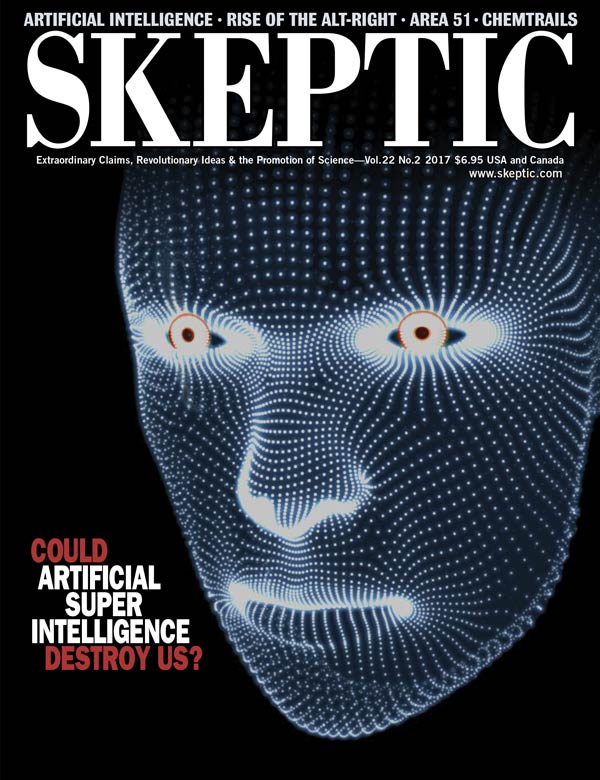
This article appeared in Skeptic magazine 22.2 (2017)
Buy this issue
Our research, based on a sample of hundreds of respondents to a survey distributed through social media, indicates that they probably represent a common form of atheism but not the majority view. Most atheists express some degree of tentativeness in their beliefs and would be prepared to consider contrary evidence and arguments. In other words, they are skeptical in their orientation rather than dogmatic. However, the prevalence of dogmatic atheism may come as a surprise to some observers, including Richard Dawkins,1 who stated that he “would be surprised to meet many people” who would say “I know there is no God.” Many respondents in our survey said this.
Distinguishing Between Categories of Atheistic Belief
To categorize the various forms of atheism, it is necessary to distinguish among several closely related concepts.
Formal v. informal meanings of atheism. The term atheism literally means an absence of belief in a deity, as in a theism—without theism. This formal usage broadly encompasses both nonbelief and the explicit rejection of a deity. Nonbelief without any inclination to reject a deity is similar to, but distinguishable from, agnosticism, a term introduced by Thomas Henry Huxley in 1876 at a meeting of Britain’s Metaphysical Society, many of whose members were clergymen, and elaborated upon at a symposium published in 1884 by The Agnostic Annual. Huxley defined agnosticism as the absence of belief one way or the other and the absence of a claim to having any scientific knowledge on the issue:
Agnosticism is of the essence of science, whether ancient or modern. It simply means that a man shall not say he knows or believes that which he has no scientific grounds for professing to know or believe. […]
Minions, Mobs & Myrmidons
MONSTERTALK EPISODE 129
From ancient Greece to modern movies, monsters and villains often get their assistance from mindless mobs of maleficent minions. Are they simply plot devices, or do minions tell us something about the real-world role of the follower when loyal obedience is valued more than heroic ethics? In this episode of Monstertalk, David Perlumtter and Cait Mongrain join us to discuss Minions, Mobs and Myrmidons.

David Perlmutter

Caitlin Mongrain
Get the MonsterTalk Podcast App and enjoy the science show about monsters on your handheld devices! Available for iOS, Android, and Windows. Subscribe to MonsterTalk for free on iTunes.
eSkeptic for June 14, 2017
In this week’s eSkeptic:
COGNITIVE DISSONANCE
Fighting the Backfire Effect
Have you ever noticed that when you present people with facts that are contrary to their deepest held beliefs they always change their minds? Me neither! In fact, people seem to double down on their beliefs in the teeth of overwhelming evidence against them. This is called the Backfire Effect and it happens when people perceive their worldview to be under threat by conflicting facts. The psychology underneath the backfire effect is called cognitive dissonance, or the uncomfortable feeling you get when a deeply held belief is contradicted by the facts. Are we doomed to always be at odds with the facts and other people when they don’t agree with our beliefs? Can we shred the backfire effect and reduce the problem of cognitive dissonance? Yes! In this video, Michael Shermer presents 6 things we can do. These may not always work to change people’s minds, but they may reduce unnecessary divisiveness so rampant in our culture.
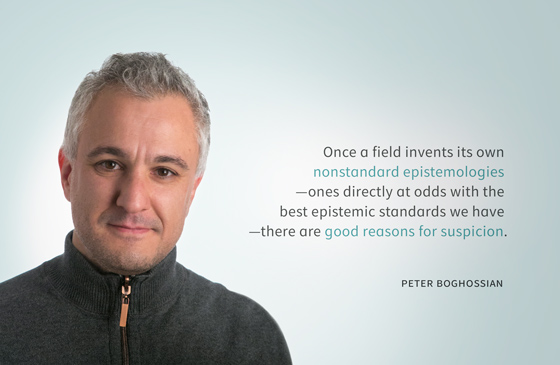
In this week’s eSkeptic, James Lindsay and Peter Boghossian offer a point-by-point reply to 10 popular criticisms of their parody-style hoax paper, “The Conceptual Penis as a Social Construct,” that they published in an academic journal called Cogent Social Sciences.
Follow the authors @peterboghossian and @GodDoesnt.
Cogent Criticisms
A Point-by-Point Reply to Criticisms of the “Conceptual Penis” Hoax
by James Lindsay & Peter Boghossian
On May 19, 2017, we published a parody-style hoax paper titled “The Conceptual Penis as a Social Construct” in an academic journal called Cogent Social Sciences. Immediately upon publication we revealed the hoax on skeptic.com. A great deal of congratulation and criticism followed, with accompanying demands that we address our critics. What follows is a point-by-point reply to 10 popular criticisms.
1. Criticism: The journal is a vanity journal that publishes anything.
Whatever the journal’s problems, this is completely false, unless the journal is lying about its rejection rate. On its landing page, Cogent Social Sciences openly advertises a 61% rejection rate of papers submitted in 2016.
2. Criticism: The journal is otherwise of such low quality that nothing can be determined about gender studies.
In our write-up for eSkeptic, we dedicated significant space to impugning the journal for publishing our paper and did so before moving on to discuss problems that, in our perception, abide within gender studies. As we duly noted, we have every reason to suspect that Cogent Social Sciences harbors deep problems with its editorial and peer-review processes. Our critics’ ability to engage in a selective reading of our write-up surprised us, however, and it caused us to reflect on how to be more cautious with our explanations in future. (Nota bene: we will return to this point further down.) […]

SCIENTIFIC AMERICAN “SKEPTIC” COLUMN FOR JUNE 2017
Romance of the Vanished Past: Did an advanced civilization disappear more than 12,000 years ago?
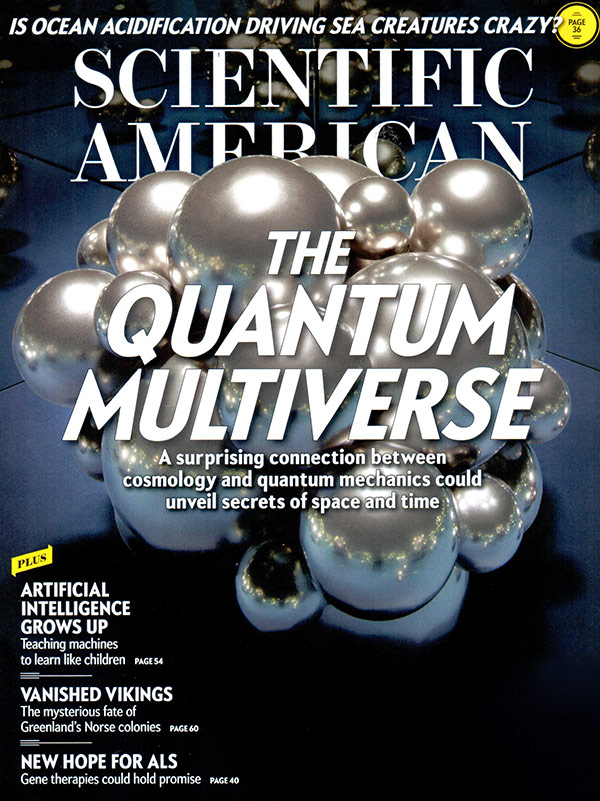
Graham Hancock is an audacious autodidact who believes that long before ancient Mesopotamia, Babylonia and Egypt there existed an even more glorious civilization. One so thoroughly wiped out by a comet strike around 12,000 years ago that nearly all evidence of its existence vanished, leaving only the faintest of traces, including, Hancock thinks, a cryptic warning that such a celestial catastrophe could happen to us. All this is woven into a narrative entitled Magicians of the Gods (Thomas Dunne Books, 2015). I listened to the audio edition read by the author, whose British accent and breathless, revelatory storytelling style are confessedly compelling. But is it true? I’m skeptical. […]
Cogent Criticisms:
A Point-by-Point Reply to Criticisms of
the “Conceptual Penis” Hoax
On May 19, 2017, we published a parody-style hoax paper titled “The Conceptual Penis as a Social Construct” in an academic journal called Cogent Social Sciences. Immediately upon publication we revealed the hoax on skeptic.com. A great deal of congratulation and criticism followed, with accompanying demands that we address our critics. What follows is a point-by-point reply to 10 popular criticisms.
1. Criticism: The journal is a vanity journal that publishes anything.
Whatever the journal’s problems, this is completely false, unless the journal is lying about its rejection rate. On its landing page, Cogent Social Sciences openly advertises a 61% rejection rate of papers submitted in 2016.
2. Criticism: The journal is otherwise of such low quality that nothing can be determined about gender studies.
In our write-up for eSkeptic, we dedicated significant space to impugning the journal for publishing our paper and did so before moving on to discuss problems that, in our perception, abide within gender studies. As we duly noted, we have every reason to suspect that Cogent Social Sciences harbors deep problems with its editorial and peer-review processes. Our critics’ ability to engage in a selective reading of our write-up surprised us, however, and it caused us to reflect on how to be more cautious with our explanations in future. (Nota bene: we will return to this point further down.)
As we stated, absolutely no academic journal should have published our paper. One did. The one that did is not a vanity journal (see above). It qualifies for faculty reimbursement at many university libraries, and it possessed at least one specialist reviewer whose knowledge of the field of gender studies evidently exceeds ours. This reviewer employed relevant academic terminology with obvious confidence (“capturs [sic] the issue of hypermasculinity through a multi-dimensional and nonlinear process”) and read the paper carefully enough to remark on absence of a tool of analysis (poststructuralist discourse analysis is mentioned in the abstract but it is used nowhere in the manuscript, which the reviewer caught). On these facts alone, it reaches too far to suggest that CONTINUE READING THIS POST…
TAGS: hoax, nonsense, peer review, scienceDr. Walter Scheidel — The Great Leveler: Violence and the History of Inequality from the Stone Age to the 21st Century
Are mass violence and catastrophes the only forces that can seriously decrease economic inequality? To judge by thousands of years of history, the answer is yes. Tracing the global history of inequality from the Stone Age to today, the Stanford University historian Walter Scheidel shows that inequality never dies peacefully. Inequality declines when carnage and disaster strike and increases when peace and stability return. The Great Leveler is the first book to chart the crucial role of violent shocks in reducing inequality over the full sweep of human history around the world.
Ever since humans began to farm, herd livestock, and pass on their assets to future generations, economic inequality has been a defining feature of civilization. Over thousands of years, only violent events have significantly lessened inequality. The “Four Horsemen” of leveling—mass-mobilization warfare, transformative revolutions, state collapse, and catastrophic plagues—have repeatedly destroyed the fortunes of the rich. Scheidel identifies and examines these processes, from the crises of the earliest civilizations to the cataclysmic world wars and communist revolutions of the twentieth century. Today, the violence that reduced inequality in the past seems to have diminished, and that is a good thing. But it casts serious doubt on the prospects for a more equal future.
An essential contribution to the debate about inequality, The Great Leveler provides important new insights about why inequality is so persistent—and why it is unlikely to decline anytime soon.
Order The Great Leveler from Amazon.
TAGS: equality, history, Science Salon, The Michael Shermer Show, violenceThe Three Shades of Atheism:
How Atheists Differ in Their Views on God
When we think of prominent atheists, we may conjure up an image of one of the “Four Horsemen” of the New Atheism—Christopher Hitchens, Sam Harris, Richard Dawkins, and Daniel Dennett—authors famous for their steadfast rejection of any form of deity and their willingness to confront the world’s religions. Ironically, however, when we see them in debates and interviews, the confidence with which they make their case and discount the opposition may at times seem indistinguishable from the offputting dogmatism of the hyper-religious. How typical of atheists are the Four Horsemen?
Our research, based on a sample of hundreds of respondents to a survey distributed through social media, indicates that they probably represent a common form of atheism but not the majority view. Most atheists express some degree of tentativeness in their beliefs and would be prepared to consider contrary evidence and arguments. In other words, they are skeptical in their orientation rather than dogmatic. However, the prevalence of dogmatic atheism may come as a surprise to some observers, including Richard Dawkins,1 who stated that he “would be surprised to meet many people” who would say “I know there is no God.” Many respondents in our survey said this.
Distinguishing Between Categories of Atheistic Belief
To categorize the various forms of atheism, it is necessary to distinguish among several closely related concepts.
Formal v. informal meanings of atheism. The term atheism literally means an absence of belief in a deity, as in a theism—without theism. This formal usage broadly encompasses both nonbelief and the explicit rejection of a deity. Nonbelief without any inclination to reject a deity is similar to, but distinguishable from, agnosticism, a term introduced by Thomas Henry Huxley in 1876 at a meeting of Britain’s Metaphysical Society, many of whose members were clergymen, and elaborated upon at a symposium published in 1884 by The Agnostic Annual. Huxley defined agnosticism as CONTINUE READING THIS POST…
TAGS: atheism, belief in GodeSkeptic for June 7, 2017
In this week’s eSkeptic:
SKEPTIC MAGAZINE 22.2
Could Artificial Superintelligence Destroy Us All?
In the latest issue of Skeptic magazine (22.2): Why We Should Be Concerned About Artificial Superintelligence; Is Artificial Intelligence an Existential Threat?; Artificial Intelligence: Simulation, Not Synthesis; The Rise of the Alt-Right and the Politics of Polarization in America; Delusions of the Imagination: Debunking an Early 19th Century Medical Quack Device — The “Tractor”; Area 51: What is Really Going on There?; Is Race a Useful Concept?; Are You An Unconscious Racist?; The Three Shades of Atheism, and more…
Read Skeptic magazine on iOS, Android, Windows Phone, Kindle Fire HD, Mac, and PC. Get the digital edition instantly from PocketMags.com, or via the Skeptic Magazine App. Or, pre-order the print edition from Shop Skeptic. The print edition won’t likely hit newsstands for another week or two.
30-DAY FREE TRIAL
on new digital subscriptions on iOS & Android
We offer a 30-day free trial to new digital subscribers on annual subscriptions within the Skeptic Magazine App for iOS and Android devices. Here’s a sneak peak at this issue for iPad…
JUNIOR SKEPTIC # 63
Terrifying! Improbable! Chemtrails!
Physically bound inside each and every issue of Skeptic magazine is Junior Skeptic: an engagingly illustrated science and critical thinking publication for younger readers (and the young at heart).
We’ve all heard the story of Chicken Little—a fanciful tale about panic and jumping to conclusions (“The sky is falling!”). But how would it feel to truly believe that the sky is out to get you? For believers in one strange conspiracy theory, it’s scary to see a blue sky crossed by wispy white contrail lines from passing jet planes. They claim some of those contrails are not clouds or exhaust from jet engines as they appear, but sinister “chemtrails.” Supposedly, an evil government conspiracy uses jet planes to secretly spread poison across skies worldwide. Is there any possibility this paranoid claim could be true? Let’s find out!
SCIENCE SALON #13: JUNE 11 @ 2PM PDT
Can’t make it to the event? Watch the live stream for free online, this Sunday.
Are mass violence and catastrophes the only forces that can seriously decrease economic inequality? To judge by thousands of years of history, the answer is yes. Tracing the global history of inequality from the Stone Age to today, the Stanford University historian Dr. Walter Scheidel shows that inequality never dies peacefully. Inequality declines when carnage and disaster strike and increases when peace and stability return. The Great Leveler is the first book to chart the crucial role of violent shocks in reducing inequality over the full sweep of human history around the world…
Reserve your seat(s) online or by calling 1-626-794-3119. Online reservation closes Sunday June 11, 2017 at 11am PDT.

FAILURE TO COMMUNICATE
Why We Published “The Conceptual Penis as a Social Construct” Hoax Exposé
Below, in this week’s eSkeptic, we present a thoughtful reflection by Alan Sokal on the latest academic hoax perpetrated by James Lindsay and Peter Boghossian, who managed to get published in the peer-reviewed journal Cogent Social Sciences their nonsensical paper “The Conceptual Penis as a Social Construct.” On the day it was released online we published in eSkeptic their exposé of the hoax. Why?
In their exposé Lindsay and Boghossian give two reasons for their hoax: (1) the pretentious nonsense that often passes for scholarship in postmodernism studies, and (2) the lax standards of some peer-reviewed journals. Critics of the hoax pounced on the second, claiming that Cogent Social Sciences is a lower-tiered journal and therefore the hoax was a failure.
My motivation for publishing the exposé focused on the first problem. To me, it wouldn’t have mattered if the hoax were published in the Annals of Improbable Research, The Journal of Irreproducible Results, or even the Onion. The point, for me, is not to fool journal editors. As the editor of a national magazine and a long-time monthly columnist for the oldest continuously published monthly magazine in the United States (Scientific American), I am sympathetic to the overwhelming amount of work it takes to produce a quality publication, particularly when the remunerative rewards are so low for most writers and editors.
What agitates me is scholarship that passes for cogent argumentation in support of a thesis that is, in fact, what Gordon Pennycook, James Allan Cheyne, and their colleagues call “pseudo-profound bullshit,” in a paper published in the highly respected peer-reviewed journal Judgment and Decision Making. Bullshit, they write, is language “constructed to impress upon the reader some sense of profundity at the expense of a clear exposition of meaning or truth.” Bullshit is meant to impress through obfuscation; that is, to say something that sounds profound but may be nonsense. It may not be nonsense, but if you can’t tell the difference then, to quote Strother Martin’s character from the 1967 Paul Newman film Cool Hand Luke, “what we’ve got here is failure to communicate.”
Compare, for example, any of the passages from the “Conceptual Penis” hoax to the abstract for the 2016 paper published in the peer-reviewed journal Progress in Human Geography titled “Glaciers, Gender, and Science”:
Glaciers are key icons of climate change and global environmental change. However, the relationships among gender, science, and glaciers—particularly related to epistemological questions about the production of glaciological knowledge—remain understudied. This paper thus proposes a feminist glaciology framework with four key components: 1) knowledge producers; (2) gendered science and knowledge; (3) systems of scientific domination; and (4) alternative representations of glaciers. Merging feminist postcolonial science studies and feminist political ecology, the feminist glaciology framework generates robust analysis of gender, power, and epistemologies in dynamic social-ecological systems, thereby leading to more just and equitable science and human-ice interactions.
When this paper was published I thought it was a hoax, so I contacted the University of Oregon, the institution of authors, and confirmed it was real. And this is just one of countless examples, posted daily on Twitter @RealPeerReview and retweeted all over the net to the amusement of readers who cannot decipher what most of these articles are even about, much less comprehend their arguments and gain value from their conclusions.
What matters to me is the truth about reality (lower t and lower r), which science is best equipped to determine. Ever since the 1980s there has been a movement afoot in academia in which postmodernism has encroached on some of biology, much of social science (especially cultural anthropology), and most of history, literature, and the humanities, in which the claim is made that there is no truth to be determined because there is no reality to study. Nearly everything—from race and gender to genes and brains—is socially constructed and linguistically determined by our narratives. And the more obfuscating those narratives are about these socially constructed non-realities, the better. This is the very opposite of how science should be conducted and communicated, and it is, in part, why we are currently witnessing the campus madness involving student protests—and even violence—when their unscientific postmodern unreal worldviews collide with the reality of contradictory facts and opposing viewpoints. It’s time we put a stop to the lunacy and demand critical thinking and clear communication.
—Michael Shermer, Editor Skeptic Magazine

Some Thoughts on “The Conceptual Penis as a Social Construct” Hoax
by Alan Sokal
Academic hoaxes are nothing new. In 1768, the Baron d’Holbach published the Portable Theology, or Brief Dictionary of the Christian Religion—slyly attributing authorship to the Abbé Bernier—in which he stoutly defended the prevailing Christian dogmas with entries like
Doctrine: What every good Christian must believe or else be burned, be it in this world or the next. The dogmas of the Christian religion are immutable decrees of God, who cannot change His mind except when the Church does.1
Probably not very many people were taken in by the hoax. But d’Holbach’s mordant satire was brilliant nonetheless, and it circulated clandestinely for decades.
In 1931, the physicist Hans Bethe and two colleagues published—while they were still postdoctoral fellows—a short article entitled “On the quantum theory of the temperature of absolute zero,” parodying speculative attempts to determine the fundamental constants of nature by numerology, in the journal Die Naturwissenschaften.2 Senior physicists were not amused, and the authors were forced to apologize.3
In 1943, the young Australian writers James McAuley and Harold Stewart hoaxed the modernist literary journal Angry Penguins into publishing 16 poems allegedly found among the papers of a recently deceased—but, alas, fictitious—poet, Ern Malley:
We opened books at random, choosing a word or phrase haphazardly. We made lists of these and wove them into nonsensical sentences. We misquoted and made false allusions. We deliberately perpetrated bad verse, and selected awkward rhymes from a Ripman’s Rhyming Dictionary.4
The hoax was quickly outed in the Australian press, and the editor of Angry Penguins held up to ridicule. But some critics nowadays claim that “Crazy as it seems, the Malley poems do have merit.”5
Some Thoughts on “The Conceptual Penis as a Social Construct” Hoax
A Note from Michael Shermer, Editor, Skeptic Magazine, on Why We Published “The Conceptual Penis as a Social Construct” Hoax Exposé
Below, we present a thoughtful reflection by Alan Sokal on the latest academic hoax perpetrated by James Lindsay and Peter Boghossian, who managed to get published in the peer-reviewed journal Cogent Social Sciences their nonsensical paper “The Conceptual Penis as a Social Construct.” On the day it was released online we published in eSkeptic their exposé of the hoax. Why?
In their exposé Lindsay and Boghossian give two reasons for their hoax: (1) the pretentious nonsense that often passes for scholarship in postmodernism studies, and (2) the lax standards of some peer-reviewed journals. Critics of the hoax pounced on the second, claiming that Cogent Social Sciences is a lower-tiered journal and therefore the hoax was a failure.
My motivation for publishing the exposé focused on the first problem. To me, it wouldn’t have mattered if the hoax were published in the Annals of Improbable Research, The Journal of Irreproducible Results, or even the Onion. The point, for me, is not to fool journal editors. As the editor of a national magazine and a long-time monthly columnist for the oldest continuously published monthly magazine in the United States (Scientific American), I am sympathetic to the overwhelming amount of work it takes to produce a quality publication, particularly when the remunerative rewards are so low for most writers and editors.
What agitates me is scholarship that passes for cogent argumentation in support of a thesis that is, in fact, what Gordon Pennycook, James Allan Cheyne, and their colleagues call “pseudo-profound bullshit,” in a paper published in the highly respected peer-reviewed journal Judgment and Decision Making. Bullshit, they write, is language “constructed to impress upon the reader some sense of profundity at the expense of a clear exposition of meaning or truth.” Bullshit is meant to impress through obfuscation; that is, to say something that sounds profound but may be nonsense. It may not be nonsense, but if you can’t tell the difference then, to quote Strother Martin’s character from the 1967 Paul Newman film Cool Hand Luke, “what we’ve got here is CONTINUE READING THIS POST…

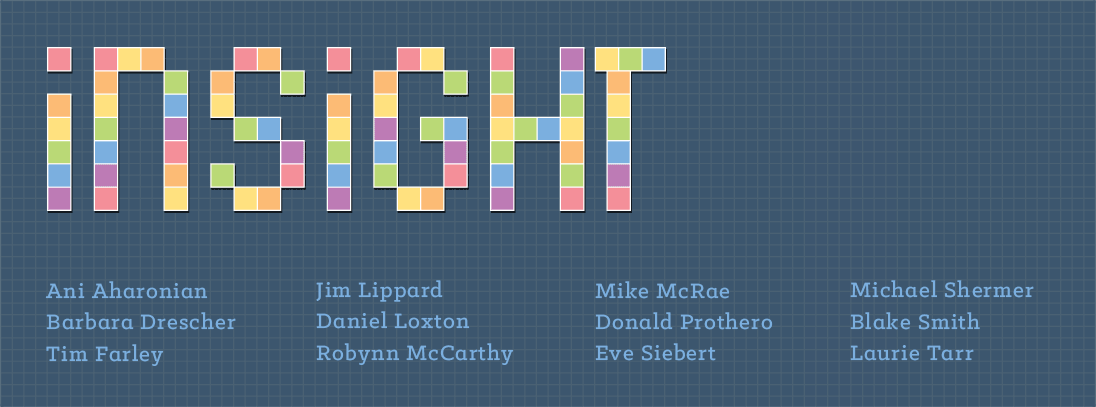



![Knowing the Score: What sports can teach us about philosophy (and what philosophy can teach us about sports) [BOOK COVER]](https://www.skeptic.com/eskeptic/2017/images/17-08-09/knowing-the-score-cover.jpg)







